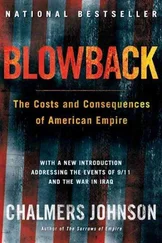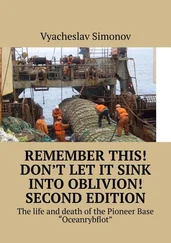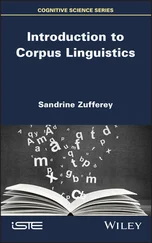(336)
CP
C
TP
Can
DP
T'
its wheels
T V
can
spin
If this analysis is correct, child sentences such as (335) (which have also been reported from other children) lend plausibility to the claim that moved constituents leave behind copies of themselves in the positions out of which they move.
But what are we to say about adult sentences like Was the president lying?
produced by speaker B in (332), where the inverted auxiliary was moves from T to
296
senten ces
C without leaving an overt copy of itself behind? The answer suggested in recent work in syntax is that movement universally involves a copying operation, but that the copy left behind in adult grammars is ‘silent’. If so, our adult question will have the structure shown in (337):
(337)
CP
C
TP
Was
DP
T'
the president
T
V
was
lying
where strikethrough is used to indicate a silent copy of a moved constituent.
Saying that the T position in (337) is occupied by the silent copy was provides us with a way of indicating that the T position ‘belongs to’ (i.e. was formerly occupied by) was and so cannot be filled by another auxiliary (e.g. we can’t insert is in T in (337), as we see from the ungrammaticality of *Was the president is lying?).
There are a number of considerations which lend support to the idea that (in adult grammars) a constituent leaves behind a silent trace copy of itself when it moves. One such consideration is theoretical in nature. We have supposed up to now that all phrases and clauses are projections of a head word category. If we are to retain this principle, TP in (337) must be headed by a T constituent: and if there is no overt T constituent in (337), there must be a covert one. The silent copy of the moved auxiliary fulfils this requirement.
Descriptive considerations relating to cliticisation lead us to the same conclusion. In this connection, note that have can cliticise to they in sentences such as
(338) below, but not in (339):
(338) a.
They have gone
b.
They’ve gone
(339) a.
Will they have gone?
b.
*Will they’ve gone?
Why should cliticisation of have onto they be possible in (338) but not in
(339)? We can give a straightforward answer to this question if we suppose that movement of will into C in (339) leaves a silent copy behind in the T
position out of which will moves, i.e. in the position marked by will in the structure (340):
(340)
[
Will
will
CP [C
] [TP they [T
] have gone]]?
We can then say that the presence of the intervening silent copy will in T prevents have from cliticising onto they in inversion structures such as (340).
Movement
297
Operator movement
So far, we have assumed that clauses are CPs, and that a CP comprises
a head C constituent (filled by an overt or null complementiser in some structures and by a preposed auxiliary in others) and a TP complement. However, one
question which such an analysis raises is where the bold-face pre-auxiliary
constituents are positioned in structures such as (341): (341) a.
What languages can you speak?
b.
No other colleague would I trust
Each of the sentences in (341) contains an italicised inverted auxiliary (can/would) occupying the head C position of CP, preceded by a bold-face phrase of some kind (namely what languages/no other colleague). Each of the pre-auxiliary phrases contains a determiner which is said to have the semantic function of being an operator: thus, what is an interrogative operator (or wh-operator) and no is a negative operator. Expressions containing such operators are called operator expressions.
It seems clear that each of the operator expressions in (341), despite its position, functions as the complement of the verb at the end of the sentence. One piece of evidence leading to this conclusion is the fact that each of the examples in (341)
has a paraphrase in which the operator expression occupies the canonical (i.e.
typical) complement position after the relevant verb:
(342) a.
You can speak what languages?
b.
I would trust no other colleague
Structures like (342a) are sometimes referred to as wh-in-situ questions, since the wh-operator expression what languages does not get preposed but rather remains in situ (i.e. ‘in place’) in the canonical position associated with its grammatical function as complement of speak. Structures such as these are used primarily as echo questions, to echo and question something previously said by someone else (e.g. if a friend boasts ‘I just met Elvis Presley’, you could reply – with an air of incredulity – ‘You just met who?’). Sentences such as those in (342) make it plausible to suppose that the operator phrases in (341) originate as complements of the relevant verbs, and subsequently get moved to the front of the overall sentence.
But what position do they get moved into?
The answer is obviously that they are moved into some position preceding the inverted auxiliary. Now, since inverted auxiliaries occupy the head C position in CP, we might suppose that preposed operator phrases are moved into some
pre-head position within CP. Given that specifiers are typically positioned before heads, an obvious suggestion to make is that preposed operator phrases occupy the specifier position within CP (abbreviated to spec-CP). If this is the case, then the derivation of the sentences in (341) will involve the movement operations arrowed below (where, in order to save space, the symbol t is used to denote a silent trace copy left behind by a moved constituent):
298
senten ces
(343)
CP
C'
TP
T'
VP
DP
C
D
T
V
DP
What languages
can
you
t
speak
t
No other colleague
would
I
t
trust
t
(I)
(II)
(We have assumed in (343) that what/no are interrogative/negative determiners, and hence that the phrases what languages and no other colleagues are DPs –
though for simplicity, we do not show their internal structure.) Two different kinds of movement (indicated by the dotted lines) are involved in (343): movement (I) is movement of a head (the italicised auxiliary can/would) from T to C, and, as already discussed, this type of movement operation is referred to as head movement; movement (II) involves movement of an operator expression into the
specifier position within CP, and this very different kind of movement operation is known as operator movement (or more specifically as wh-movement when it
affects wh-expressions).
An assumption made in the analysis of operator movement in structures like
(343) is that just as a moved head (e.g. an inverted auxiliary) leaves behind a silent trace copy of itself in the position out of which it moves, so too a moved operator expression leaves behind a trace copy at its extraction site (i.e. the position out of which it is extracted or moved). The bold trace (t) in (343) makes this explicit: it serves to mark that the DP position containing the trace ‘belongs to’ (i.e. was formerly occupied by) the preposed complement and so cannot be filled by any other constituent (hence the ungrammaticality of e.g. *What languages can you speak any Italian?, where the DP any Italian illicitly occupies the DP position which belongs to the trace). Evidence in support of positing that a wh-phrase leaves behind a trace copy of itself when it moves comes from facts about have-cliticisation. The form have of the perfect auxiliary has the clitic variant ‘ve and can cliticise to an immediately preceding word which ends in a vowel or
Читать дальше
![Andrew Radford Linguistics An Introduction [Second Edition] обложка книги](/books/397851/andrew-radford-linguistics-an-introduction-second-cover.webp)











